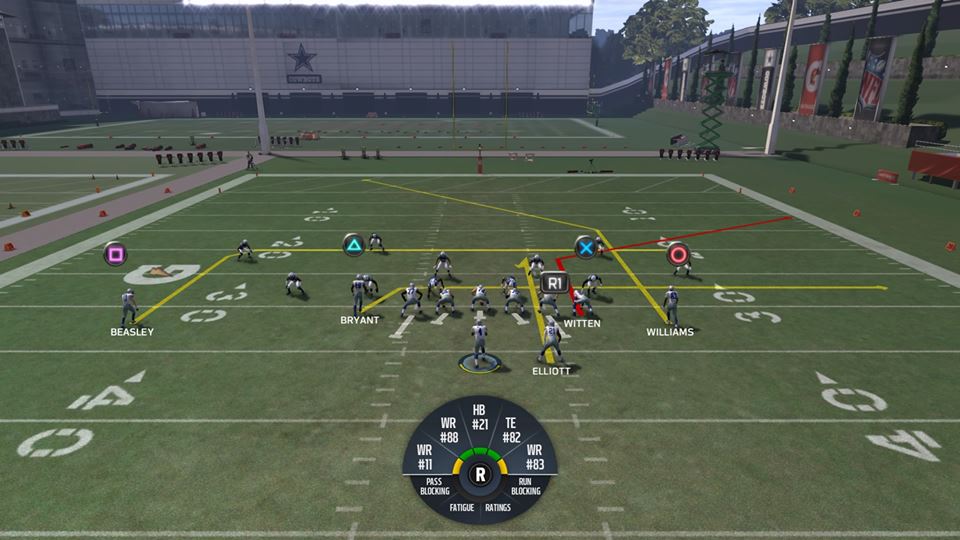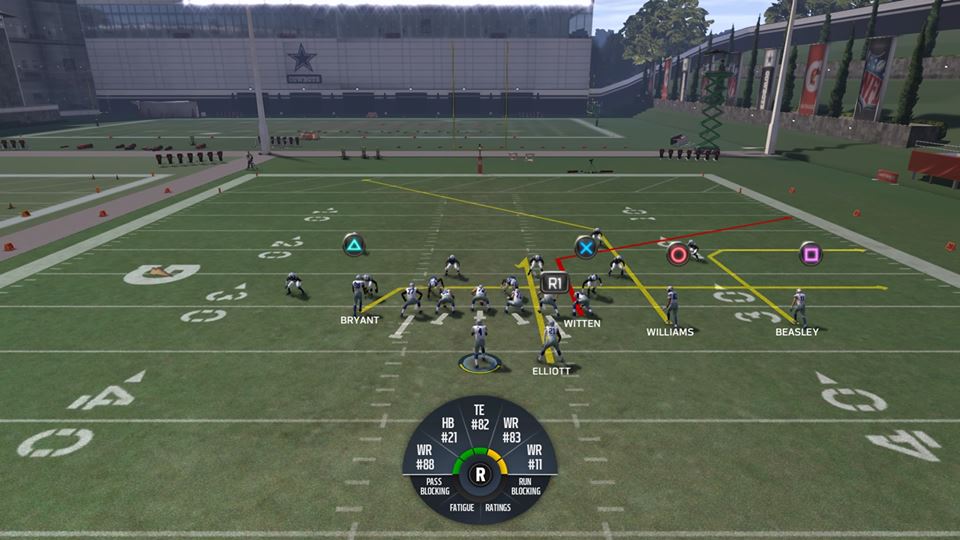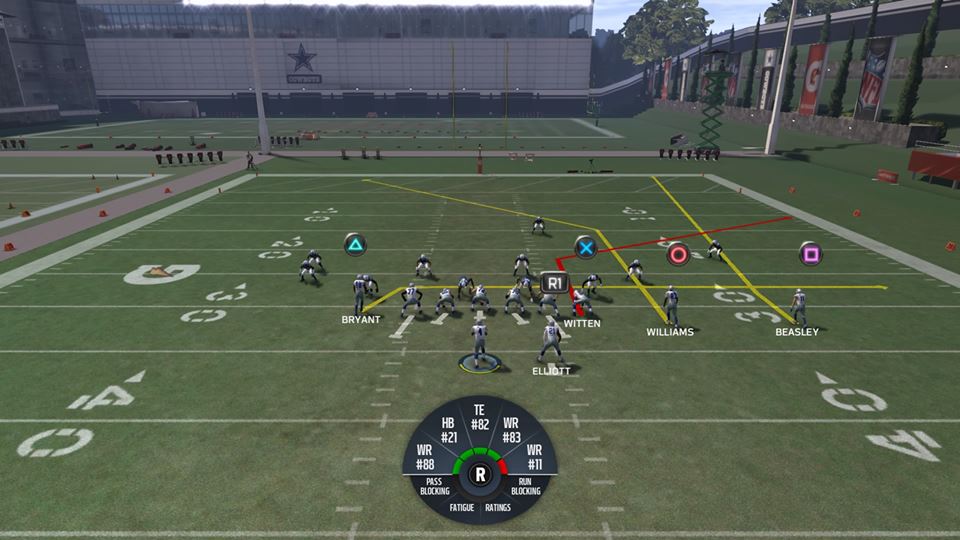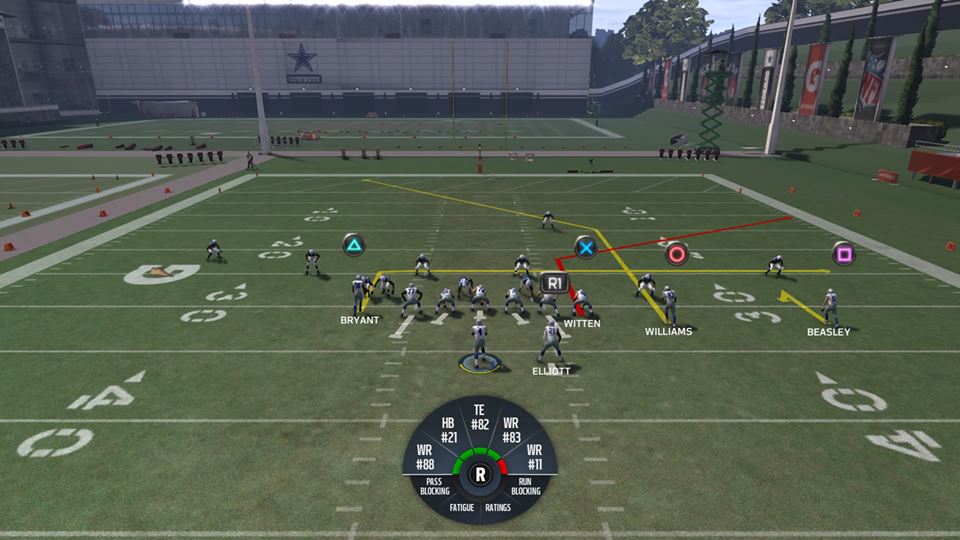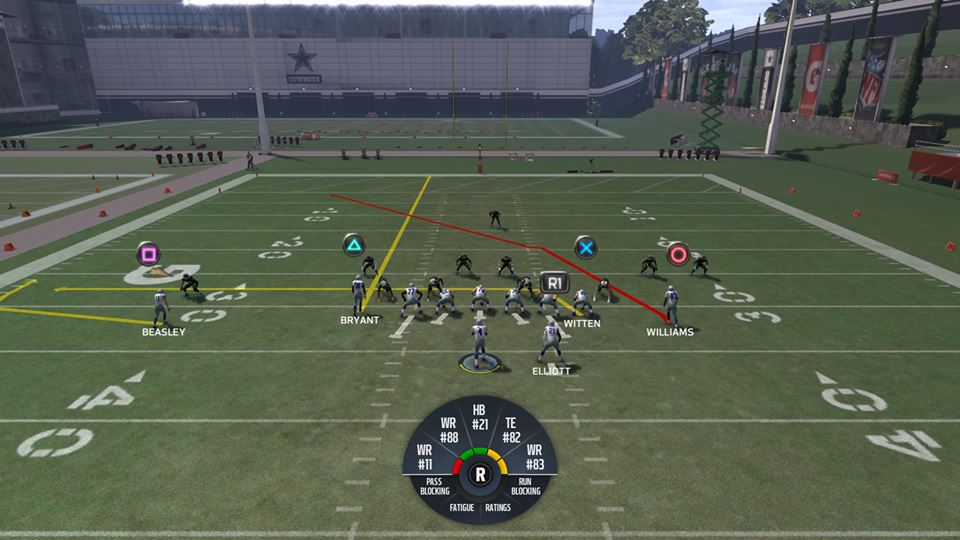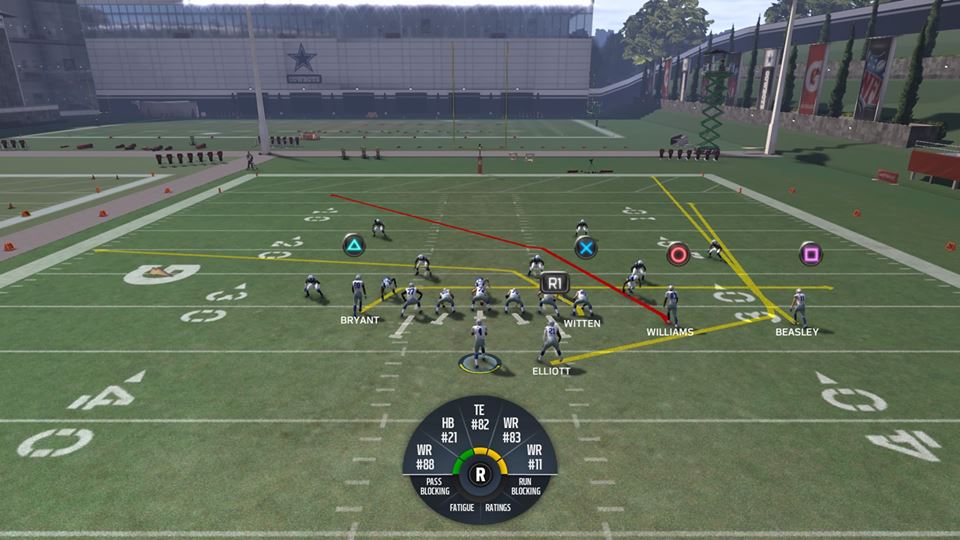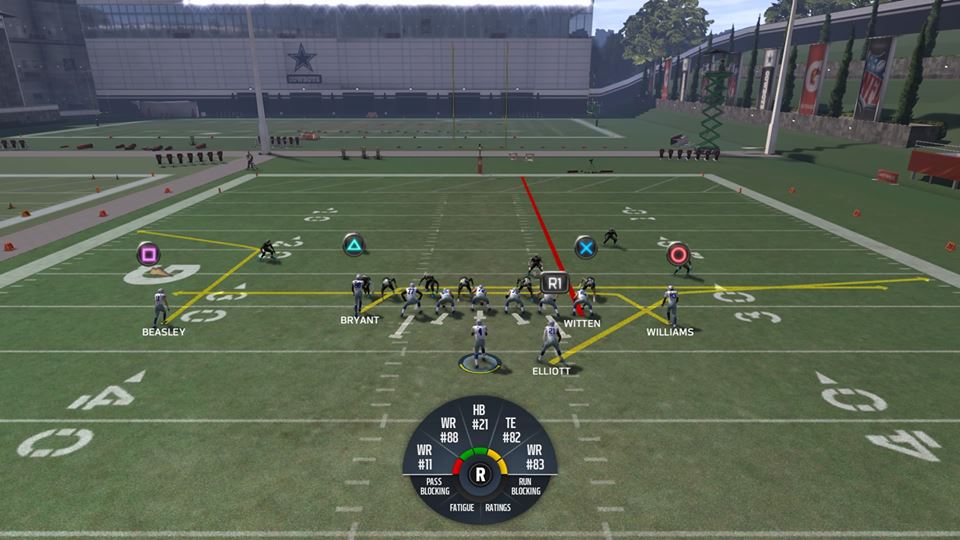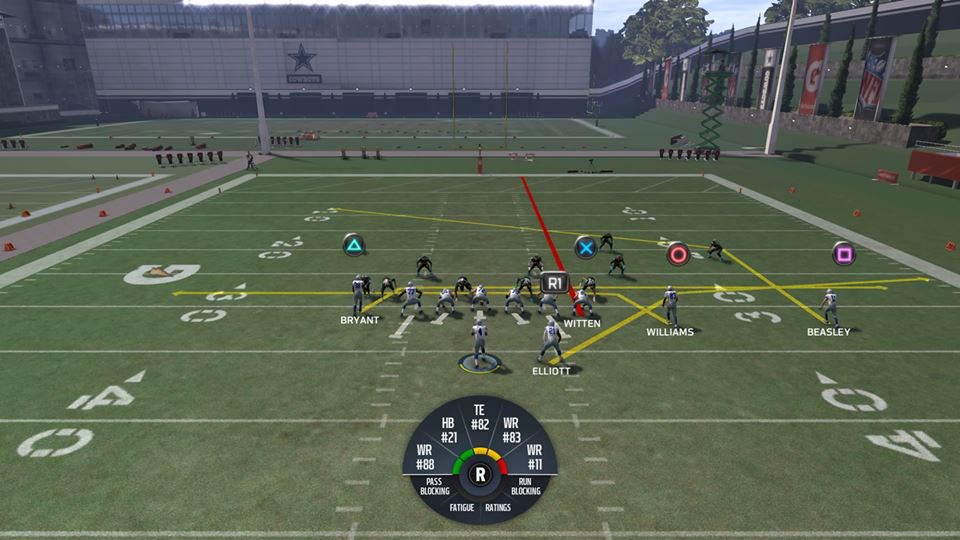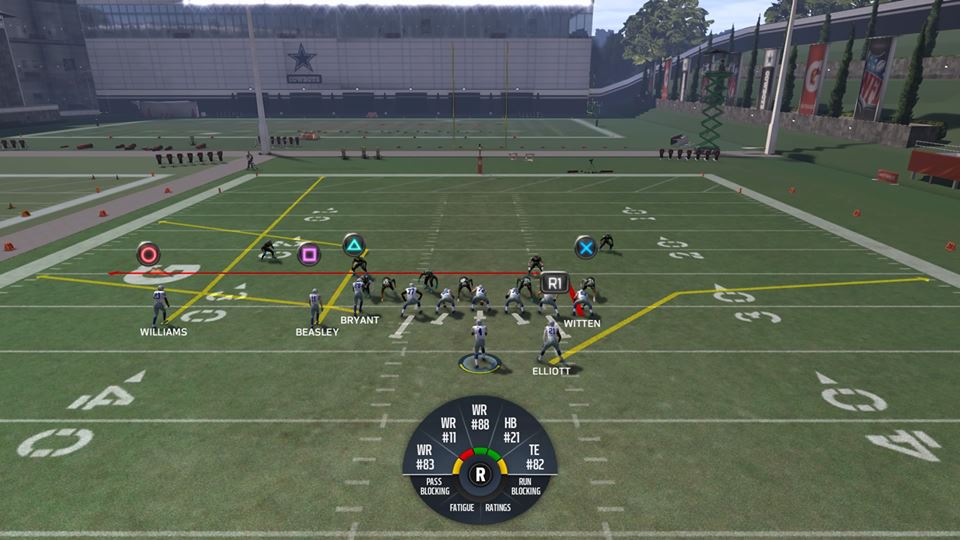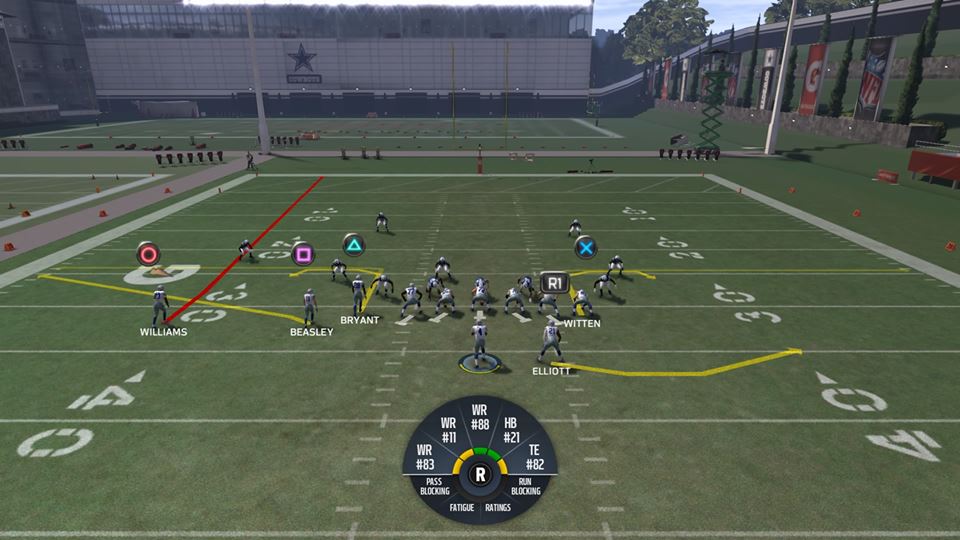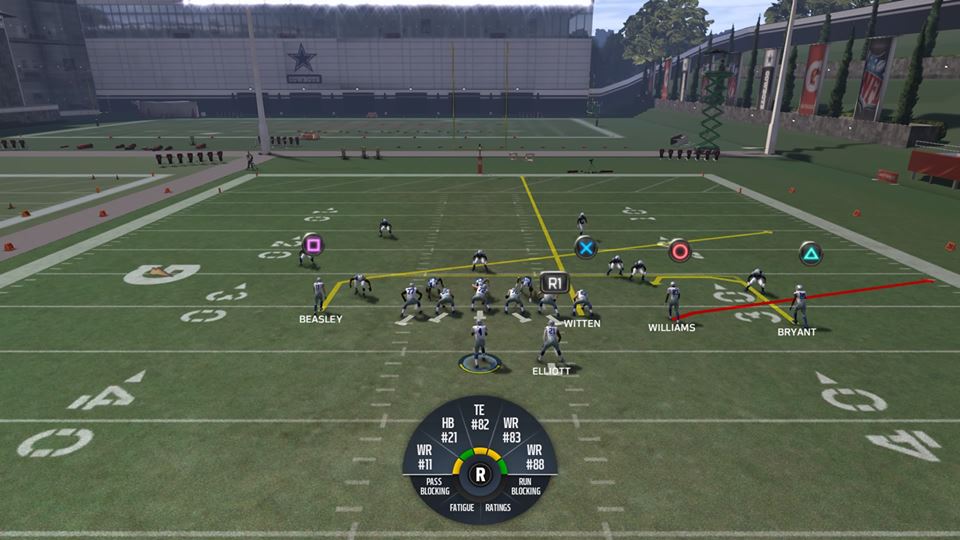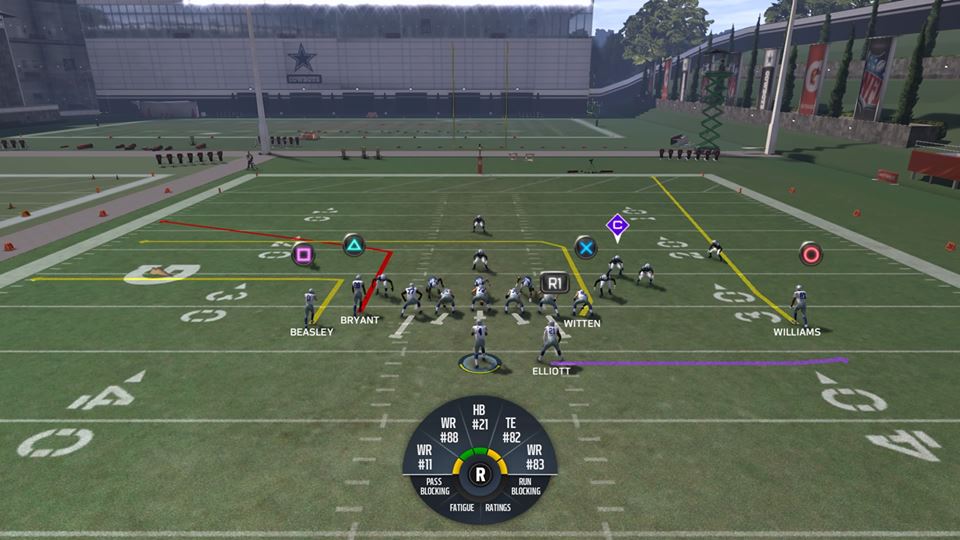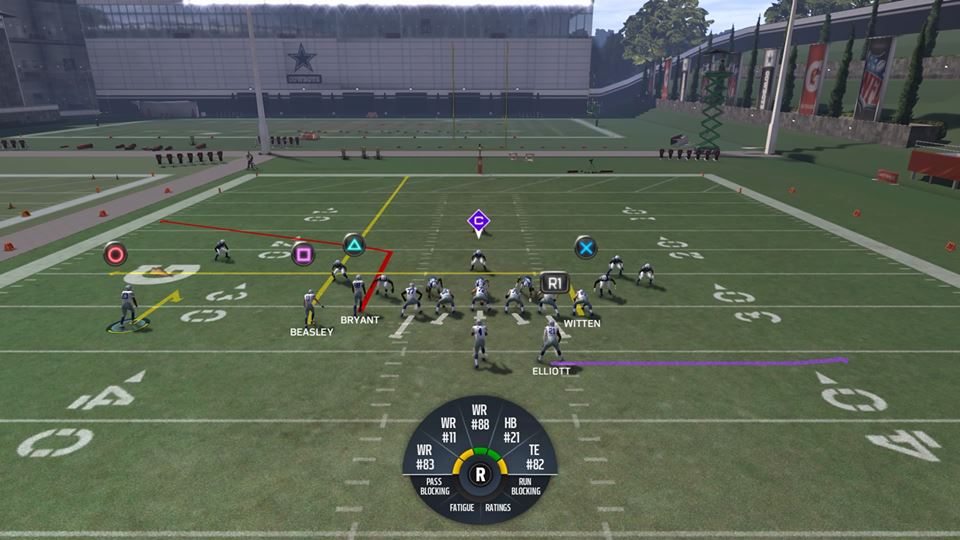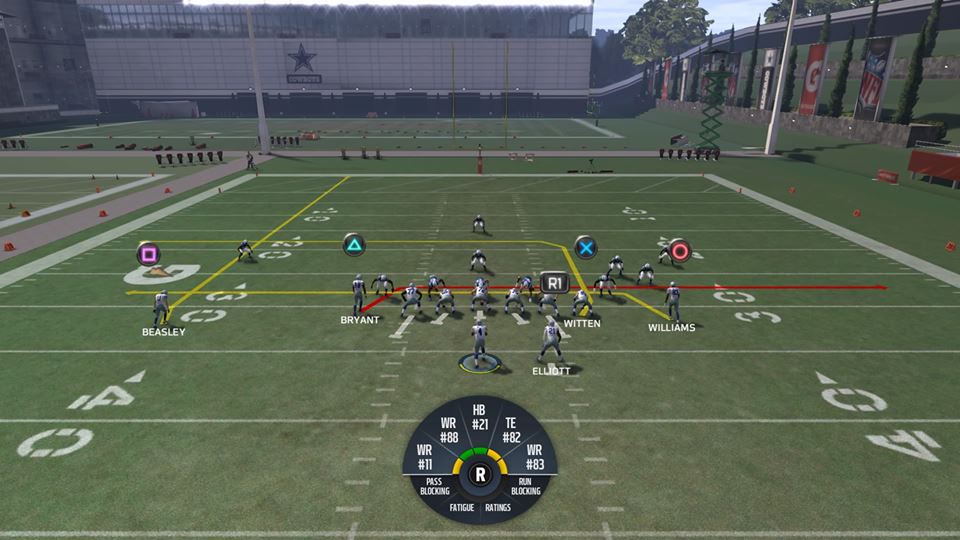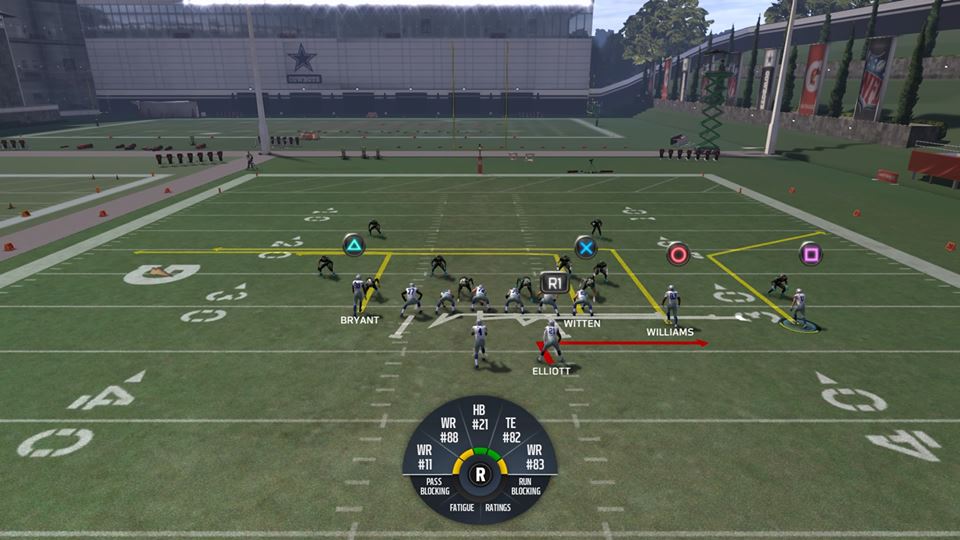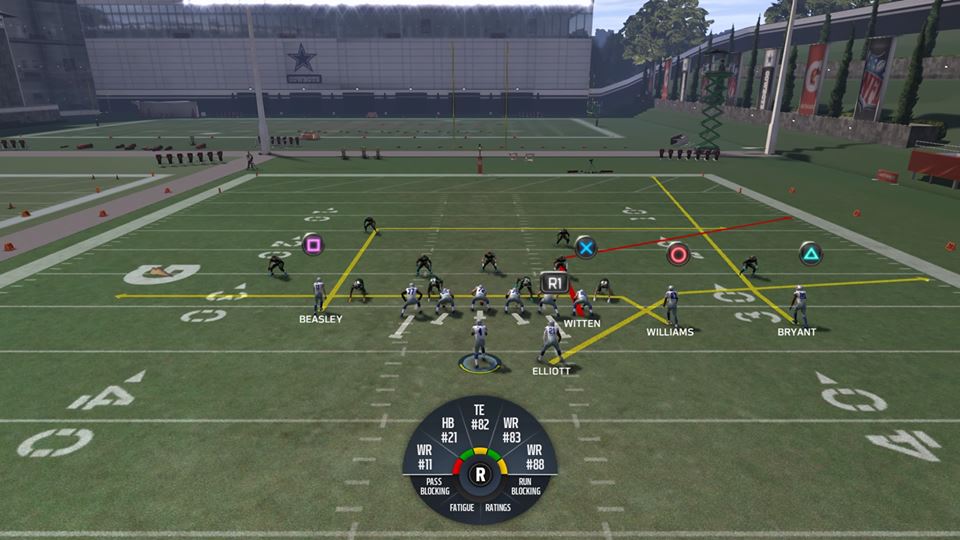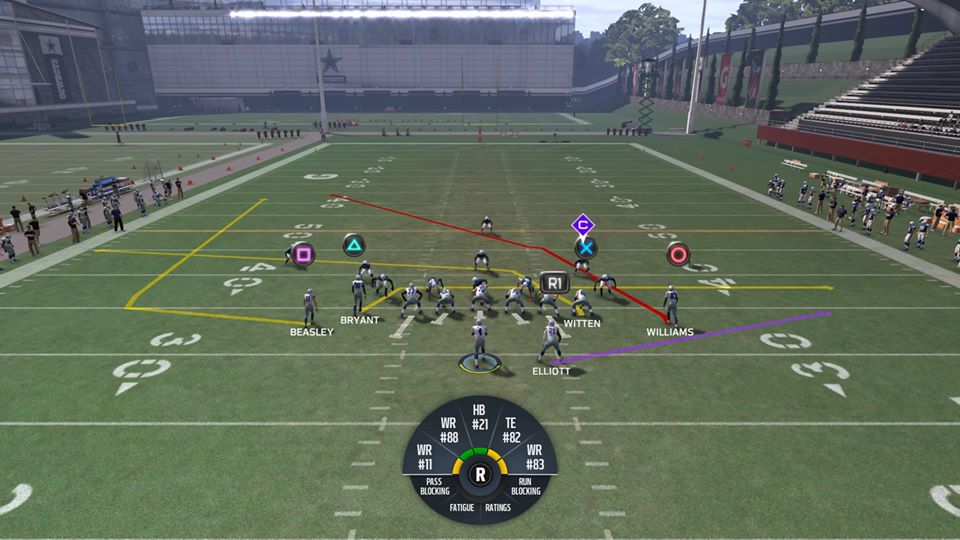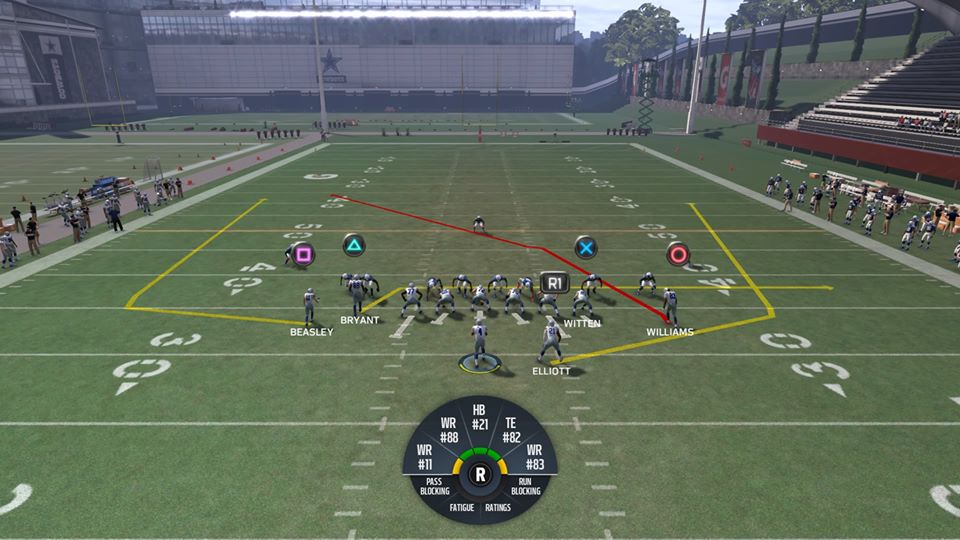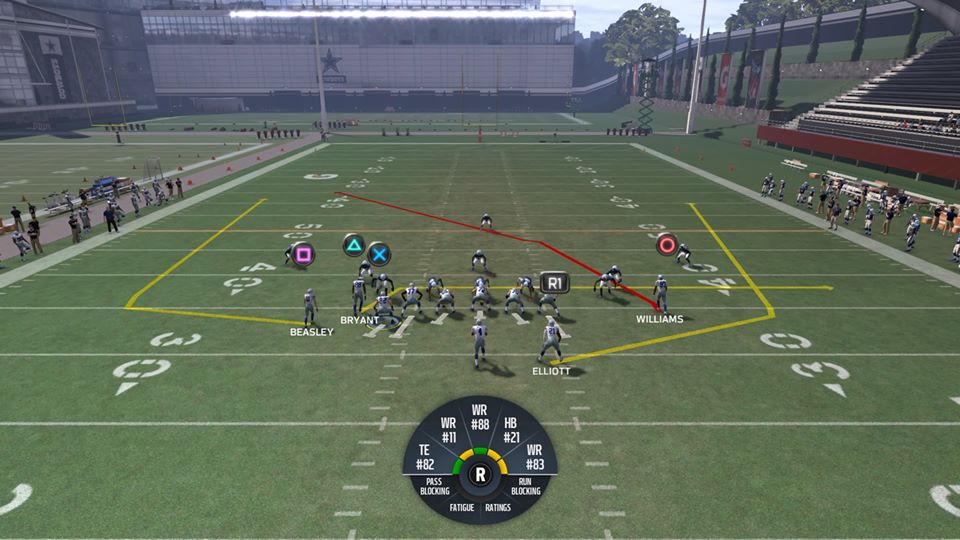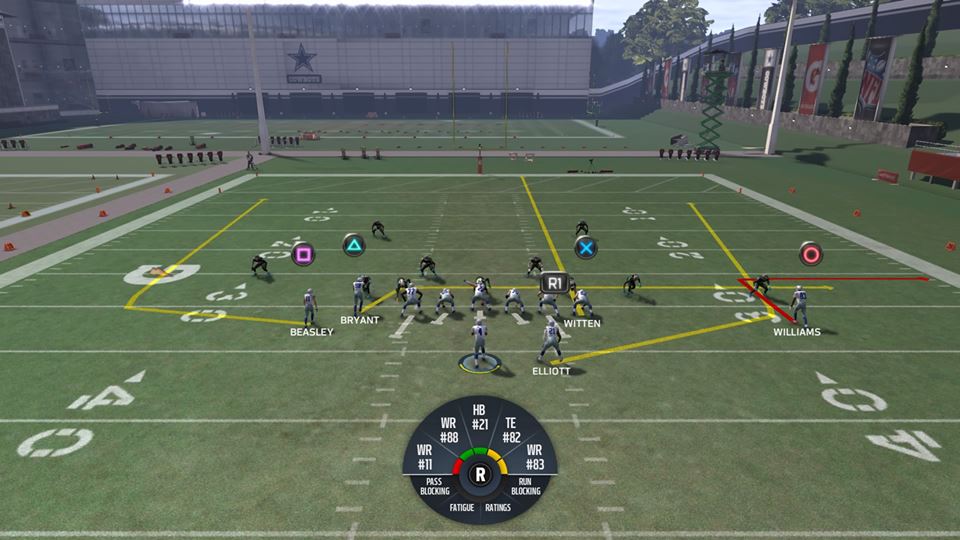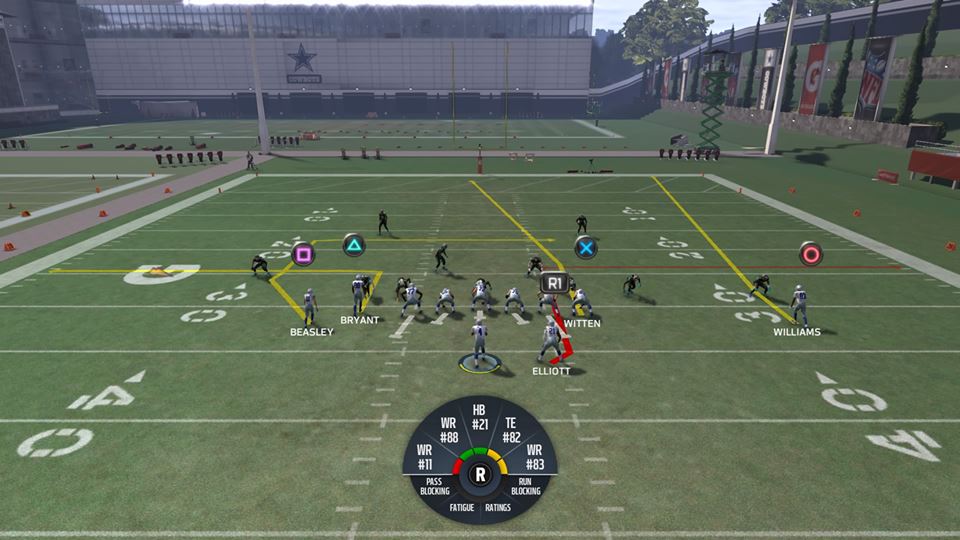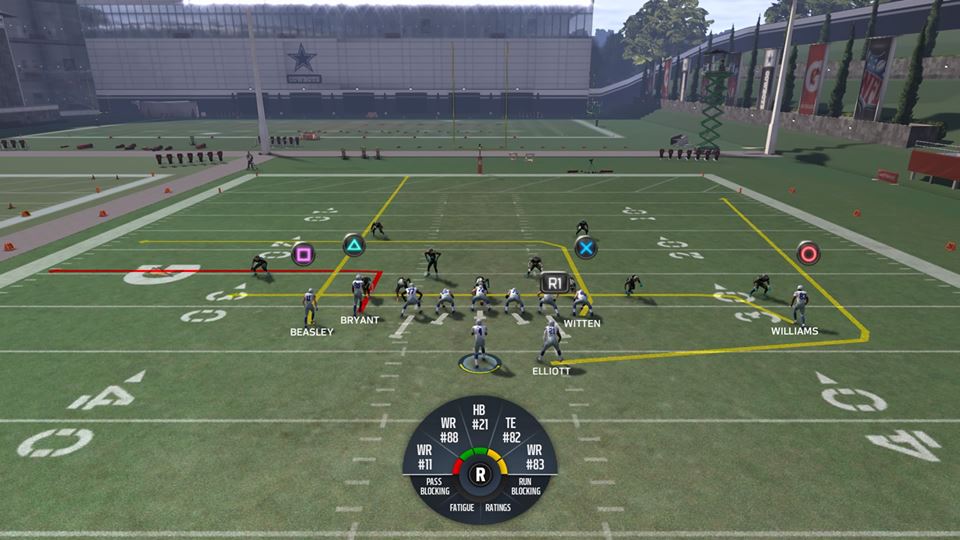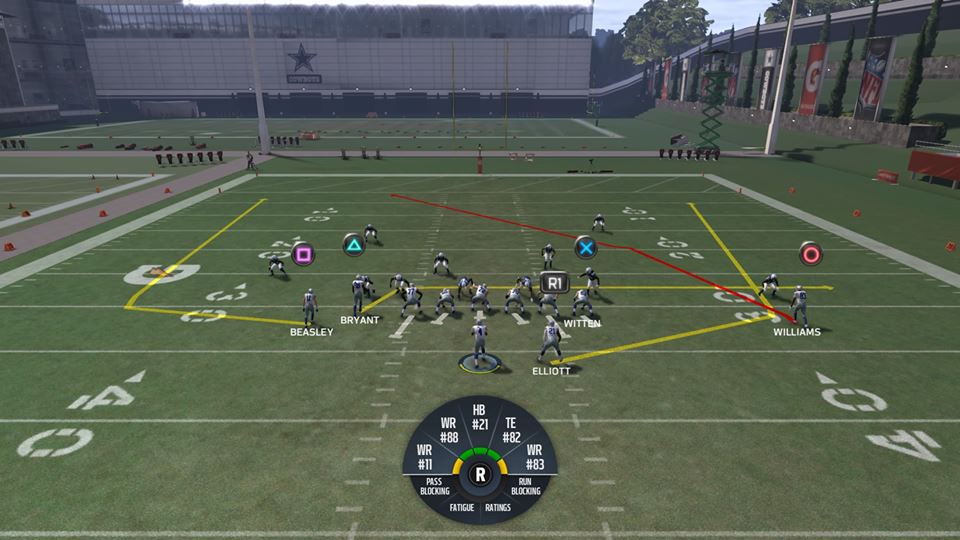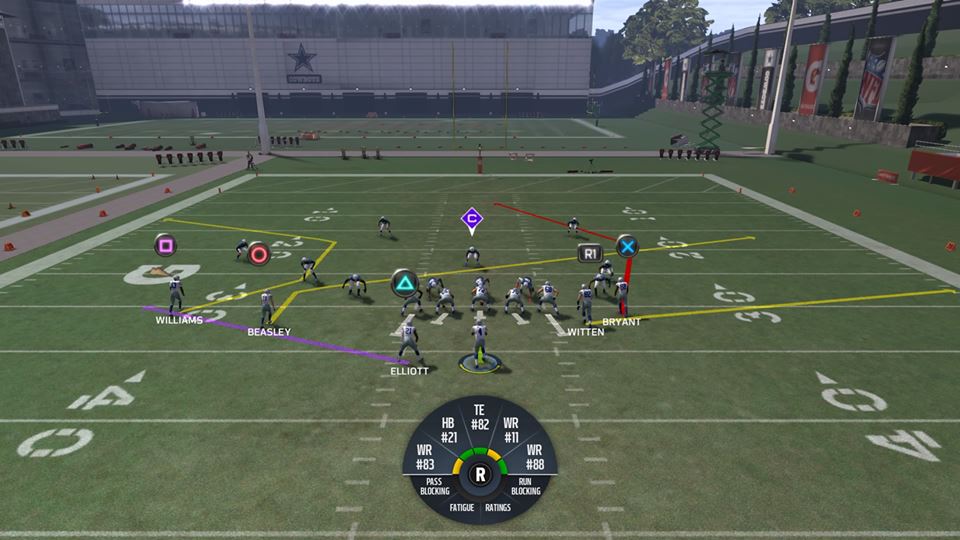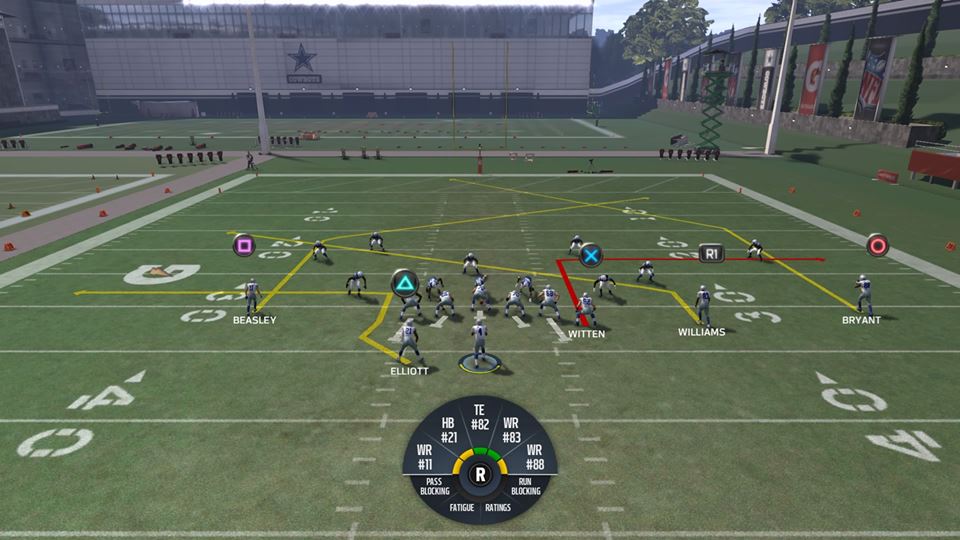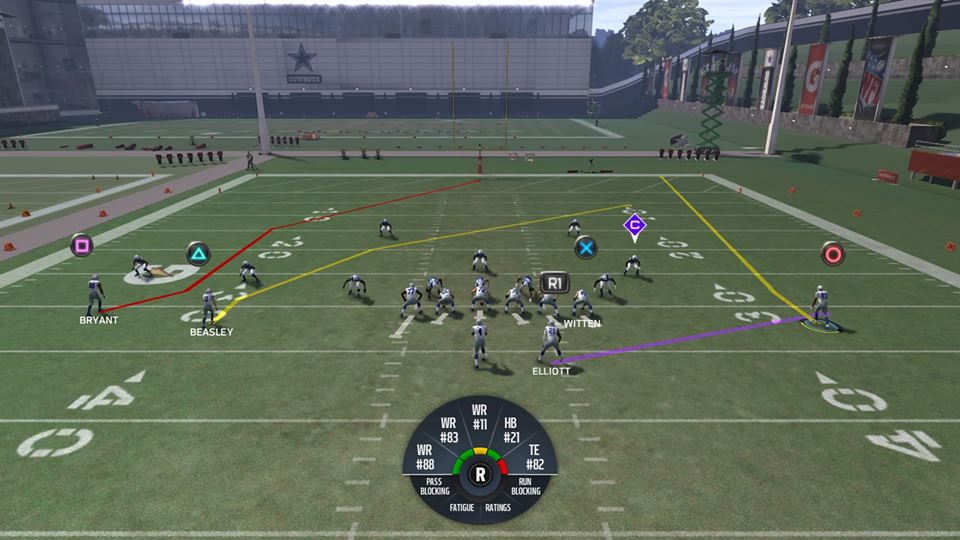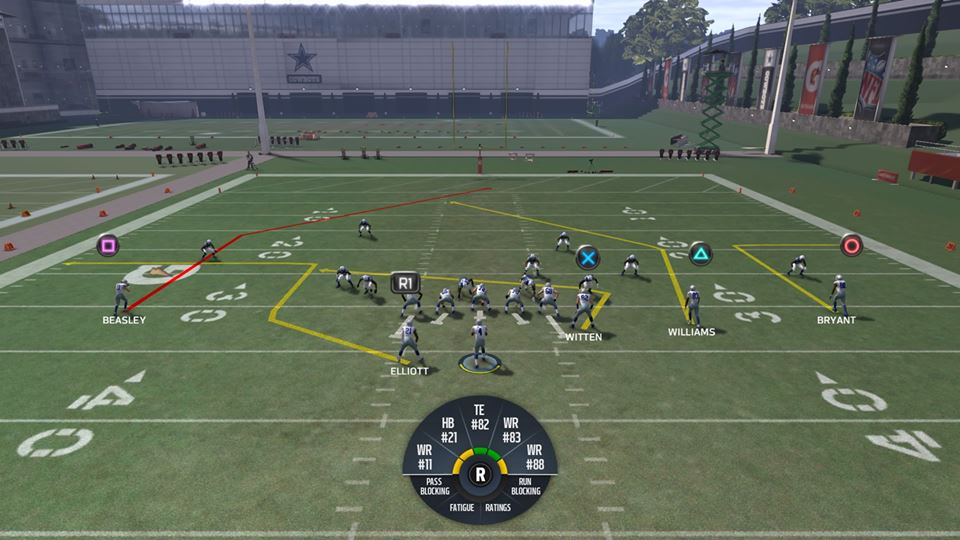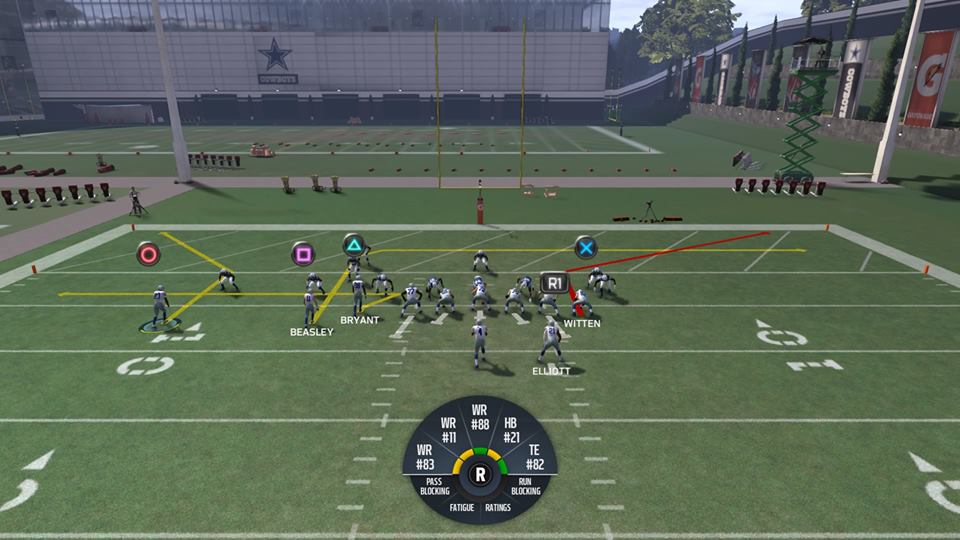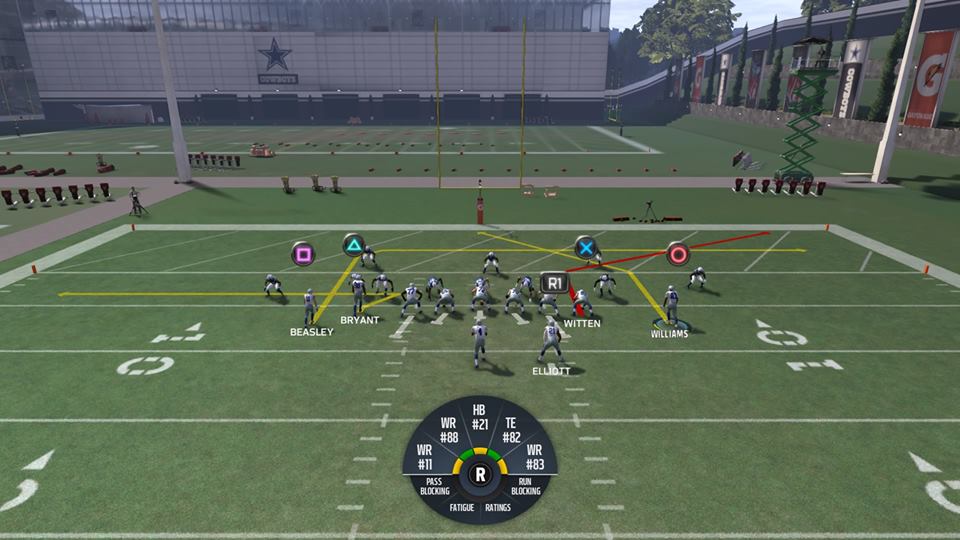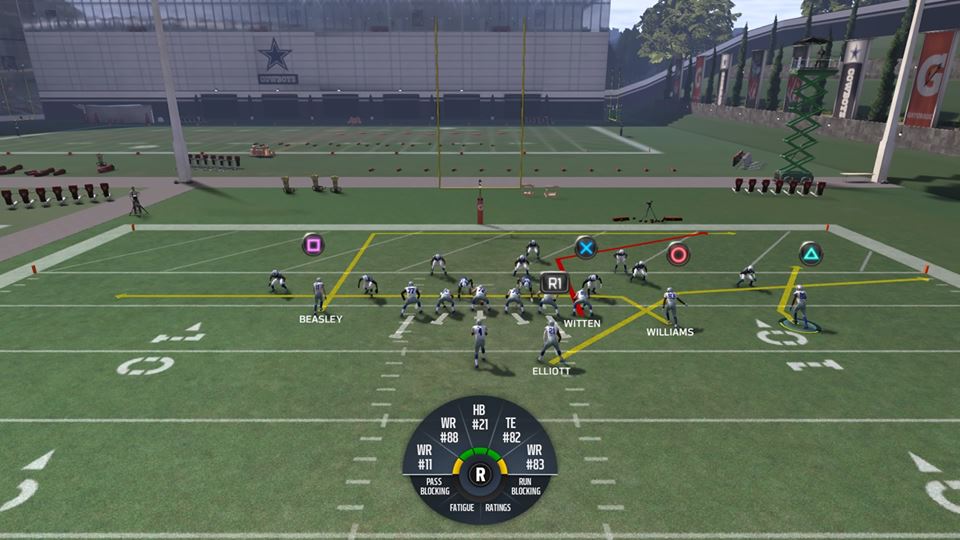SALARY CAP OFFENSIVE GUIDE
The Salary Cap Offensive Guide is our sister guide to The Patriot Act Offensive Guide. In this version we take an in-depth look into a small amount of formations to maximize our success in a game mode that forces you to minimize the personnel that you can use on the field. You will learn several setups for one play, rather than several plays with similar setups. This guide will be small in stature, but huge on value. Inside this guide you will find;
- Personnel Suggestions w/ Depth Chart Placement
- Two Sample Lineups (One Cap Heavy, One Budget)
- Gun Tight Doubles On Breakdown
- Blitz Pickup Breakdown
- Other Money Plays w/ Same Personnel
- RedZone Scoring Breakdown
So as you can see, there are not very many sections in the guide. There is a TON of information in each section however, so enjoy the journey friends. Let’s get into The Salary Cap Offensive Guide!
Gun Tight Doubles On
The Money Maker!This formation is the “bread winner” of the scheme. Tight Doubles On is what our depth chart is set up for, and the formation gives us so many advantages. The first advantage of the formation is that both outside WR’s are off the line of scrimmage, this opens the door for a ton of different motion snaps. Our second advantage is that with a TE on the line, two WR’s off the line of scrimmage, and a third WR that can be on a drag at any time we choose, we essentially have a completely unbumpable formation. Our last major advantage of this formation is the depth of the plays within it, we have the ability to create pretty much any passing concept we want from the playbook.
Below you will find a video tutorial on each base play, each situational passing play, the passing audibles, and the run game from the formation. WATCH THESE!!! The videos contain much more information than print does. Below the videos, we have included tabs for quick reference on the fly. Let’s get into Tight Doubles On!Â
Base Plays:
- Pivot Fork
- Cross Wheels
- Tight Curl
Audibles:
- Dbl Stick
- HB Quick Base
- Flood Drive
- PA WR Cross
Situational/Mix In:
- HB Screen
- Z Spot
- Shot Fade Cross
VIDEO TUTORIALS:
QUICK REFERENCE:
Pivot Fork is a great play call in almost any situation. We have setups designed to get short yardage or long yardage as well as the ability to quick snap with a RB already in pass protection. Click the tabs above for a quick reference setup to use on the fly. Please be aware that these are just the setups for the play that we like best, and that you should watch the video to understand the depth of the play.
- Place Left Slot WR on Drag
- Place RB on Curl (optional)
- Motion Left Outside WR to Left
- Drag/Curl Combo
- Motioned In Route
- Post
- Place Left Slot WR on Drag
- Place RB on a Curl (optional)
- Motion Left Outside WR to the Right
- Motioned Out Route
- Drag/Curl Combo
- Post
- Place Left Slot WR on Drag
- Place Left Outside WR on Fade
- Motion Left Outside WR to Right
- Motioned Fade
- Drag
- Post
- Place the Left Slot WR on an In Route
- Place the Left Outside WR on a Hitch
- Motion Left Outside WR to Right
- Read the Flat Zone, Hi-Low Between Hitch and Corner
- Read Hi-Low Between In and Post
Cross Wheels is historically one of the most dominant plays in Madden. It provides a great way to beat all variations of Cover 2. This year it is not as dominant as it has been in years past (mostly because no one really plays man coverage), but it will still play a large role in our scheme. From this play we can dink and dunk with a deep option on each setup as well.
- Max Protect
- Place Left Slot WR on Streak/Fade
- Place TE on a Drag
- Motion Left Outside WR to the Left
- Motioned Wheel
- Streak
- Drag
- Wheel Deep
- Place Left Outside WR on an In
- Smart Route Left Outside WR
- Motion Left Outside WR to the Right
- Motioned Out Route/RB Wheel
- Drag
- Cross/Post
- Place Left Outside WR on Fade
- Motion Left Outside WR to Right
- Motioned Fade
- Drag
- Cross/Post
- RB Wheel
Tight Curl gives us a great base play to use common passing concepts like mesh and sail as well as the ability to motion snap a corner route on the outside against corners in man coverage or a deep third. This play also works really well against aggressive users because there is just too much to cover over the middle of the field, as well as a RB that leaks out almost unguarded on the mesh post setup.
- Place Left Slot WR on Drag
- Place TE on a Streak
- Motion Left Outside WR to Left
- Motioned Corner
- Drag Going Right/Table Route
- Drag Going Left
- Place Left Slot WR on a Drag
- Place TE on a Streak
- Motion Left Outside WR to the Right
- Table Route
- Drag/Drag
- Streak/Post
- Place Right WR on Fade
- Place the TE on an In Route
- Motion Right WR to Left
- Motioned Fade
- Flat
- Corner
- In
If there was one weakness to this formation it would be the audibles. Unfortunately they are not the best. Our goal however, will be to make the best of a bad situation. In this section we will go over how to use our audibles to create all of our base passing concepts if need be.
- Place Right WR on Fade
- Place RB on Swing Right
- Motion Right WR to Left
- Motioned Fade
- TE Spot/RB Swing
- Flat/Spot
- Place Left Outside WR on Slant
- Place TE on a Streak
- Motion Left Inside WR to Right
- Flat
- Spot
- Slant
- Place Left Outside WR on an Out
- Place Right WR on Fade
- Motion Right WR to the Right
- Motioned Fade
- Out/Corner
- Dig
- Place TE on In Route
- Place Right WR on Hitch
- Motion Right WR to Left
- Seam Streak
- Corner/Hitch
- In
- Block RB
- Drag Left Inside WR
- Motion Left Outside WR to Left
- Motioned Streak
- Drag/Drag
- Dig
There are a few plays in this formation that are outstanding when ran here and there. They don’t have enough going on in them to run them consistently, but when mixed in they can be very successful for us. In this section we will break down these plays.
- Motion Left Outside WR to Right
- Motioned Corner
- HB Screen
- In Route
- Place Left Outside WR on Slant
- Place TE on a Streak
- Motion Left Inside WR to Right
- Flat
- Spot
- Slant
- Place Left Outside WR on an Out
- Place Right WR on Fade
- Motion Right WR to the Right
- Motioned Fade
- Out/Corner
- Dig
Blitz Beating 101
Blocking and DottingAs you can probably predict, nothing is going to go as smoothly as it looks/sounds above. People are going to be sending pressure and making adjustments to try and stop you from succeeding. Below you will learn the simple methods for picking up the blitz, and more importantly, a small blitz pickup scheme to use the blitzes against themselves based on their coverage principles.
VIDEO TUTORIALS:
QUICK REFERENCE:
- Basic Blitz Pickup
- Block Right Side (RB)
- Block Right Side (TE)
- Blocking Left Side (RB)
- Block Left Side (TE)
For most people, picking up the blitz by blocking an extra player will be better than sending out different route combinations to exploit the coverage and dot the blitz. In this section we go over the easiest ways to pick up pressure without deviating from our offense too much.
- Either Block RB or Place on Delay
This will pick up most simple edge blitzes from the right and allow us to not deviate too far from our offense.
- Block the TE
This particular way to pick up right side heat is best when we plan to use our  QB’s legs to stretch the defense or like a route that our RB is on and don’t want to lose it picking up the pressure.
- Block the RB
- Motion RB to Left
This method of picking up left side pressure gives us the ability to get all of our real receivers out on routes, but we do need to alter our offense slightly since we can’t motion anyone else.
- Block TE
- Motion TE Left
Using this method of blocking left side pressure would be best for you if you like the route the RB is on and want to keep it on the play or if the rusher on that side has just been dominating your RB as TE’s usually block better.
In this section we take a look at exploiting cover 2 pressures that send 5 people on the play art. We do strongly recommend blocking the blitz and working within your normal offense generally, but this method is great when you have fallen behind the sticks or need to move the ball quickly.
Things to Remember:
- These blitzes have Squat Flats, and Vertical Hooks
- The RB going outside with a receiver motioned wide on the same side is key to the middle of the field
- Compressed Bench Concepts are tough for a Squat Flat to deal with
- Vertical Hooks only stay vertical until someone enters their hook area
Popular Blitzes/Defenses This Applies To:
- Dollar DB Fire 2 Press
- Nickel/Dime Blitz 2
- Big Dime Slant Zone 2
- Place TE on a Streak
- Place Right WR on an Out
- Motion Right WR to Right
- Drag/Streak
- Drag/Wheel
- Place Left Inside WR on Out
- Place Right Outside WR on Fade
- Motion Right WR to Right
- Out Route
- Streak/Option
- Fade
- Place the Left Inside WR on an Out
- Place the RB on a Wheel
- Motion Right WR to Right
- Out
- Dig
- Streak
In this section we take a look at exploiting cover 3 pressures that send 5 people on the play art. These type of blitzes are ALL match coverages by default. A Match Coverage is cancelled by the use of Trips or compression, so if our goal is play against a true cover 3, then all we need to do is motion a WR across the formation or use no motion and we will be playing a true cover 3. For that just look to use basic blocking techniques. If you keep the coverage a match coverage (by motioning a WR out on the side he is already on), most of our offense is already geared to beat that because of the man-to-man principles of the defense. We will however show one play to beat a match defense for a one play TD.
Things to Remember:
- We can cancel their match coverage by motioning a WR across the formation
- We can also cancel their match coverage by using no motion at all
- To force them to keep their match coverage, motion a WR on the same side he started on
Popular Blitzes/Defenses This Applies To:
- Any Formation Buck Slant
- Nickel/Dime Overload 3 Press
- 3-3-5 Wide 3 Sam Will Blitz
- Place TE on a Block
- Motion Right WR to Right
- Drag
- Post/Wheel
Money Plays
w/ The Same PersonnelSometimes you will be faced with an opponent that is doing a great job adjusting to the offense from Tight Doubles On. In a normal situation you will probably just want to adjust back with them to make Tight Doubles On work, but you may be faced with a “must convert/succeed” situation where you may want to go to something that you have not ran at all to keep them from having a good idea of what is coming. In this section we break down some great mix plays for those type of situations.
VIDEO TUTORIALS:
QUICK REFERENCE:
- Money Plays
- Bunch Wk: PA Post
- Pats Wing Trips: Pats Y Out
- Trips TE: PA Shot Wheel
- Normal Wing Pats: Switch Fork
This is a list of plays with a high success rate that you can go to in clutch situations to catch the defense off guard when they will be adjusting for the offense that have been running. Use these periodically, if you try to spam them they become less of a money play and easy to lock up.
- Place RB on a Delay
- Motion Right Outside WR to Left
- Flat
- Slant/Post
- Corner/Delay
- Slant Right Slot WR
- Slant/Out
- Flat/Post
- Deep Post
- Place the RB on a Delay
- Place the Left Inside WR on Fade
- Motion Left Inside WR to Right
- Motioned Fade
- Cross/Post
- Delay Check Down
- Place Right Outside WR on an Out
- Smart Route Right Outside WR
- Motion Left Slot WR to Right
- Out
- TE/Motioned Post
- RB Flat
RedZone Scoring 101
Start Planning EarlierIt would be an understatement to say that the redzone is tough to score in on Madden 17. Between WR’s dropping the ball every time a defender is within a 5 yard radius and the front seven turning into blockshed god’s against the run, you probably find yourself settling for three far more than you would like.
Our solution to this is to start planning to score earlier. Most people wait until they are inside the 10 yard line (the Madden redzone) to begin the “scoring process”. This is flawed thinking because then you are only giving yourself three opportunities to get the ball into the endzone. We suggest starting to go for the score from the 20 yard line (the real redzone) by calling plays that give you a great chance to get the ball inside the endzone, or at least within the 5 yard line with a first and goal to work with. Below we break down plays to call from inside the 5 yard line.
VIDEO TUTORIALS:
QUICK REFERENCE:
The whole concept of avoiding the first and goal situation from in between the 10 and 5 yard line is the focus of this redzone tutorial. If you are at the 20 or outside of the 20 you do NOT want to end up with another first down outside of the 5 yard line. Go down outside the 10 yard line if need be by pressing both triggers and square/X.
Since we can’t change the way the game plays in terms of drops and block sheds, we want to manipulate our field position to give us the maximum number of plays inside the 20 yard line. Once you are inside the 20, posts, corners, streaks, and fades are rarely viable routes to call anymore because of the way that the zones attack the goal line.
Remember we don’t really need to score, we just need to get to about the 2 yard line with two downs or so remaining because at that point we can sneak, toss, or FB dive our way to 6 points.
- Smart Route the TE
- Smart Route the Right WR
- Motion Right WR to Left
- Either Slant Out
- Whip
- Dig
- Smart Route the TE
- Smart Route the Right WR
- Whip/Dig
- Post/Corner
- Place Left Inside WR on Fade
- Place Right WR on Drag
- Motion Left Inside WR to Right
- Table Route
- Drag
- Dig


